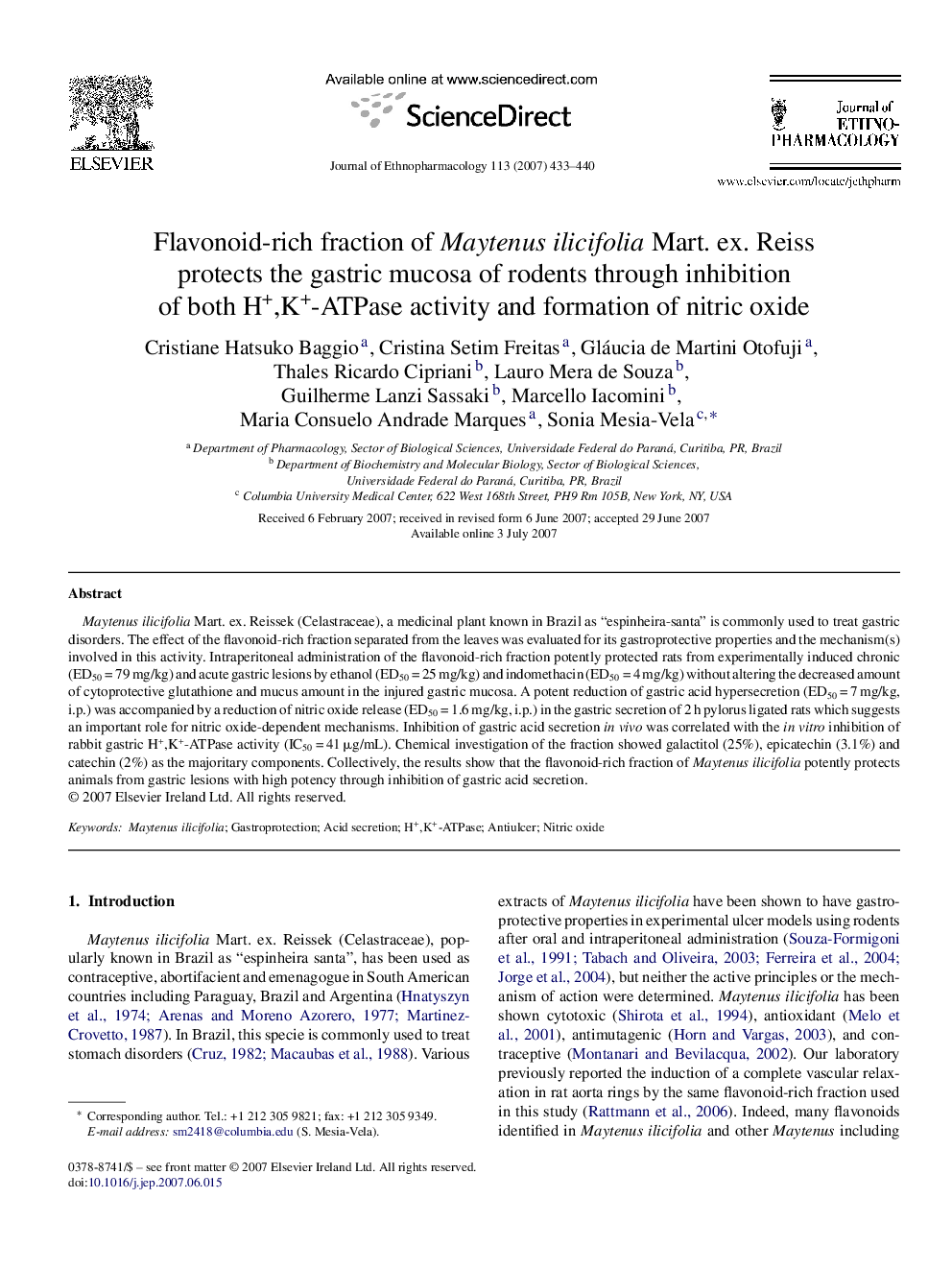| Article ID | Journal | Published Year | Pages | File Type |
|---|---|---|---|---|
| 2548103 | Journal of Ethnopharmacology | 2007 | 8 Pages |
Maytenus ilicifolia Mart. ex. Reissek (Celastraceae), a medicinal plant known in Brazil as “espinheira-santa” is commonly used to treat gastric disorders. The effect of the flavonoid-rich fraction separated from the leaves was evaluated for its gastroprotective properties and the mechanism(s) involved in this activity. Intraperitoneal administration of the flavonoid-rich fraction potently protected rats from experimentally induced chronic (ED50 = 79 mg/kg) and acute gastric lesions by ethanol (ED50 = 25 mg/kg) and indomethacin (ED50 = 4 mg/kg) without altering the decreased amount of cytoprotective glutathione and mucus amount in the injured gastric mucosa. A potent reduction of gastric acid hypersecretion (ED50 = 7 mg/kg, i.p.) was accompanied by a reduction of nitric oxide release (ED50 = 1.6 mg/kg, i.p.) in the gastric secretion of 2 h pylorus ligated rats which suggests an important role for nitric oxide-dependent mechanisms. Inhibition of gastric acid secretion in vivo was correlated with the in vitro inhibition of rabbit gastric H+,K+-ATPase activity (IC50 = 41 μg/mL). Chemical investigation of the fraction showed galactitol (25%), epicatechin (3.1%) and catechin (2%) as the majoritary components. Collectively, the results show that the flavonoid-rich fraction of Maytenus ilicifolia potently protects animals from gastric lesions with high potency through inhibition of gastric acid secretion.
